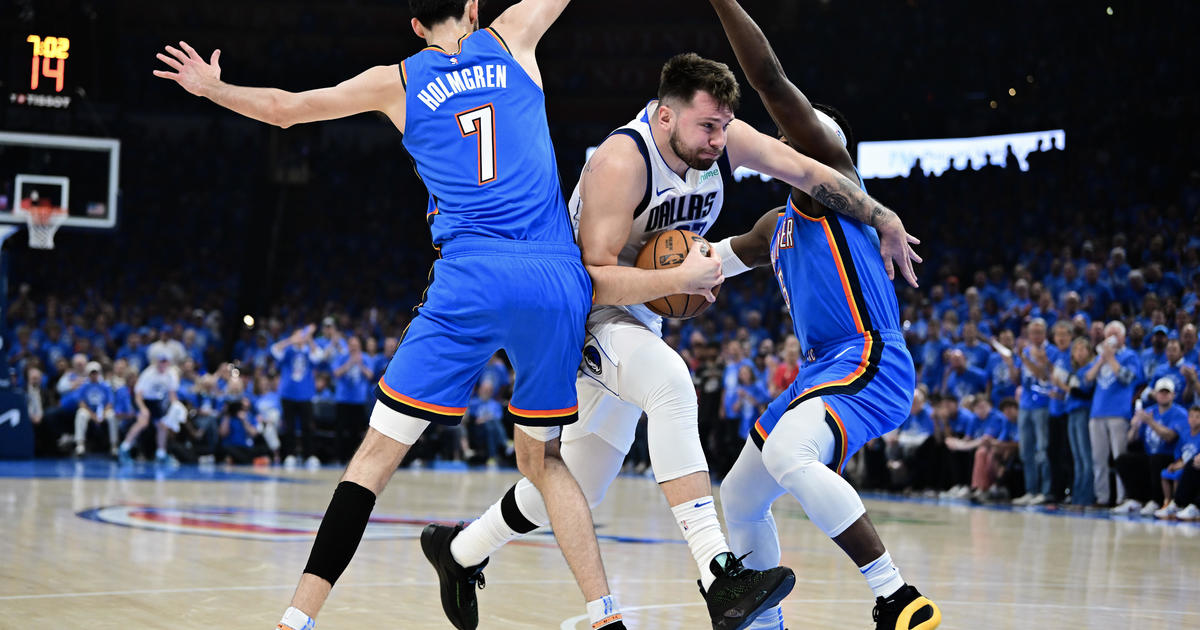Deadly wrong-way crashes on the rise in Dallas County
DALLAS (CBSDFW.COM) - Records obtained by CBS 11 show more people have died in wrong-way crashes in Dallas County so far this year than all of last year and each year before that going back to 2017.
The new information comes after Dallas police officer Jacob Arellano died last week in a crash with a wrong-way driver.
TxDOT statistics show so far this year in Dallas County, there have been 16 deadly wrong-way crashes on one-way roads such as highways.
Last year, there were 13 such crashes in Dallas County, 12 in 2020, 15 in 2019, seven in 2018 and six in 2017.
In Dallas, Tarrant, Collin and Denton counties, there have been 22 deadly crashes so far this year, which is the same amount as all of last year.
There were 23 of those crashes in the four counties in 2020, 26 in 2019, 14 in 2018 and 11 in 2017.
Sho Williams of Arlington said he came face to face with a wrong-way driver on an area highway.
"You don't know what to do," Williams said. "Four cars later, there was a head-on collision."
Scott Cooner, an engineer at Texas A&M Transportation Institute, said wrong-way crashes represent only one percent of all wrecks from year to year.
"While it's a rare crash type, it's a severe crash type," Cooner said.
Most happen between midnight and 5 a.m. and there's alcohol involved between 60% and 75% of the time, according to experts.
To prevent wrong way crashes, each exit ramp on highways in Texas has signs and pavement markings warning drivers.
Aside from the signs and the markings, technology has also been used in our area to prevent wrong-way crashes.
In 2017, TxDOT began a five-year pilot program at 24 exit ramps along two areas of I-30.
One between University Drive and I-820 in Fort Worth, the other between Fielder Street and State Highway 360 in Arlington.
Cooner said TxDOT installed cameras next to warning signs to detect wrong-way drivers and notify TxDOT's operations center.
When that happens, lights on the signs are activated.
Video from TxDOT shows how the driver quickly realized he or she was going the wrong way.
Cooner has researched the problem for years.
"We have a four minute video that shows once the system is activated by a wrong-way driver and we have four minutes to see, does that vehicle turn around and self-correct and not enter the freeway going in the wrong direction and the vast majority of the cases, that's what happens," he said.
Cooner said TxDOT recently installed a camera at one of the exit ramps at the State Highway 114 and State Highway 26 interchange in Southlake.
The North Texas Tollroad Authority has a similar system using a thermal camera to detect a wrong-way driver and notify its operations center.
Video from last Friday supplied by the agency, shows a driver quickly turned around after trying to enter the Dallas North Tollway near Harry Hines Blvd. the wrong way.
In the spring of 2024, TxDOT will use technology on Woodall Rogers Freeway and parts of Central Expressway in Dallas to prevent wrong-way crashes.
Cooner says if you have to drive on the highways overnight, stay alert and follow this advice: "Particularly late at night, when you don't need to be in that left lane to be passing vehicles, traffic is lighter, staying to the right we believe is a safer option for motorists. That wrong-way driver is going to be typically, two-thirds of the time going to be in the left lane of the right-way travel."
Williams said he liked hearing about the technology.
"That's great, any prevention is amazing," he said.




